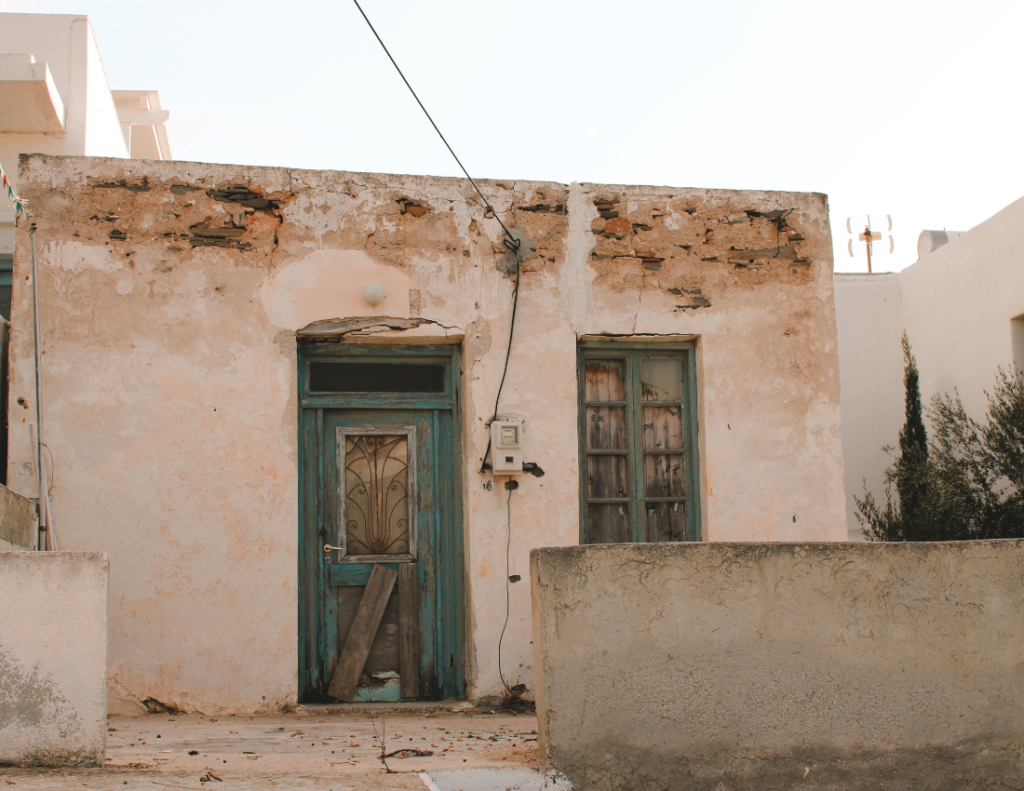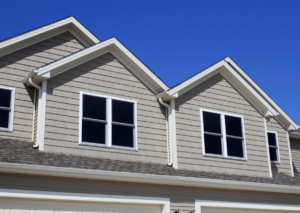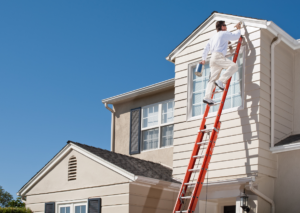Your home’s exterior is the first impression to visitors and passersby. Over time, exposure to sun, rain, wind, and other elements can wear down your paint, diminishing your home’s curb appeal and potentially leading to costly repairs.
If you’re planning an exterior house painting project, knowing the signs to repaint your house exterior can save you money and protect your investment.
Before diving into the most common signs that your home needs a fresh coat of paint, it’s helpful to understand how weather and time affect exterior surfaces. The quality of your previous paint job, the type of siding or material, and local climate conditions in Easton, CT all influence how long your paint lasts.
On average, most homes need repainting every 5 to 10 years, but you might need to act sooner depending on visible wear. Let’s get started!
Key Takeaways:
- Fading, peeling, and cracking paint are clear signs your home needs repainting.
- Moisture-related issues like bubbling paint or wood rot signal urgent repainting needs.
- Mildew, mold, and stains reduce curb appeal and may damage paint and surfaces.
- Chalking paint weakens protection and indicates it’s time for a fresh coat.
- Local climate and material type influence how soon you need to repaint your exterior.

Why Recognizing Signs to Repaint Your House Exterior Matters
Painting isn’t just about aesthetics. The paint acts as a protective barrier against moisture, UV damage, pests, and temperature fluctuations. Ignoring damage can lead to peeling, cracking, or even structural issues.
A timely exterior painting project preserves the wood, brick, or stucco beneath the paint and keeps your home looking its best.
Below, we’ll go through important signs to repaint your house exterior that homeowners should watch for to decide when it’s time to schedule professional painting services.
1. Noticeable Fading or Discoloration
Sunlight and ultraviolet (UV) rays break down paint pigments over time. If your home’s color appears dull, washed out, or uneven, fading is likely the cause. This is one of the earliest signs to repaint your house exterior, especially on south- or west-facing walls that get the most sun exposure.
- Fading can cause your home to lose its vibrancy and curb appeal.
- Uneven color patches often indicate worn-out paint layers.
Addressing fading early means avoiding more expensive damage later.
2. Peeling or Flaking Paint
When paint loses adhesion to the surface, it starts to peel, chip, or flake off. This happens due to moisture infiltration, poor previous paint application, or natural aging.
- Peeling paint exposes wood or other materials to water damage.
- Flaking paint can be a sign that the protective layer is failing.
This is a clear sign to repaint your house exterior before further damage occurs.
3. Cracking and Bubbling Paint
Small cracks or bubbles in the paint surface often indicate moisture trapped underneath or expanding and contracting materials. Cracking paint can allow water to seep in, causing rot or mold.
- Bubbling paint suggests moisture issues beneath the surface.
- Extensive cracking means your exterior needs professional attention soon.
Ignoring cracking paint risks costly repairs.
4. Mildew, Mold, or Staining on Walls
Damp or shaded areas of your home’s exterior are prone to mildew and mold growth, especially in humid climates. These stains can discolor walls and degrade paint.
- Mildew appears as black or greenish patches on the paint surface.
- Stains from rust, pollen, or dirt also indicate repainting may be needed.
Removing mold and repainting will improve both appearance and health.
5. Water Damage and Wood Rot
Soft, spongy, or rotting wood around windows, doors, or siding signals moisture damage. Paint that fails to protect wood lets water penetrate and degrade it.
- Wood rot causes structural issues and invites pests.
- Moisture behind paint often shows as bubbling or peeling on the surface.
Repainting combined with wood repair prevents further damage.
6. Chalky Residue on Paint Surfaces
Over time, paint can break down and release a powdery, chalky substance, especially on sun-exposed surfaces. This is called “chalking” and is a natural sign paint is aging.
- Chalking reduces paint adhesion and protection.
- Excessive chalk means your home is ready for a fresh paint layer.
Professional painters will prep and remove chalking before repainting.
7. Visible Damage to Siding or Stucco
If your exterior materials show cracks, holes, or surface damage, this usually means paint is no longer protecting properly. Painted brick or stucco with peeling or powdery residue also needs attention.
- Damaged siding or stucco increases risks of moisture intrusion.
- Paint repairs alone may not be enough; siding repair might be required.
An exterior painting project often goes hand in hand with surface repairs.
Additional Factors to Think About When Deciding to Repaint
Local Climate Effects in Easton, CT
- High humidity and frequent rain accelerate paint wear.
- Intense sun exposure can fade paint quickly.
- Seasonal temperature swings cause expansion and contraction stresses.
These elements mean signs to repaint your house exterior may appear sooner in Easton than in milder climates.
Age and Previous Paint Quality
- Paint applied over poor prep or low-quality materials tends to fail earlier.
- Homes that haven’t been painted in over 10 years almost always need repainting.
Regular maintenance helps stretch the life of your paint project.
Material Type
- Wood siding generally needs repainting every 3 to 7 years.
- Stucco and brick may last longer but still show wear signs.
- Vinyl or aluminum siding usually requires less frequent repainting.
Knowing your material helps determine when to act on those signs to repaint your house exterior.
How to Prepare for Your Exterior House Painting Project in Easton, CT
Once you notice these signs, it’s smart to get a professional assessment. A skilled painter will inspect your home’s surface, identify problem areas, and recommend a timeline for repainting.
Preparation often includes:
- Pressure washing to remove dirt, mildew, and chalk.
- Scraping or sanding peeling paint.
- Repairing cracks, holes, or wood rot.
- Priming to improve adhesion and durability.
Choosing the right paint is also critical to protect against moisture, UV damage, and temperature changes.



Final Thoughts on Signs to Repaint Your House Exterior
Keeping an eye out for these common signs can save your home from unnecessary damage and costly repairs. Timely repainting enhances your home’s look, protects the structure, and maintains property value.
If you’ve spotted any of the signs to repaint your house exterior mentioned here, consider scheduling your exterior house painting project in Easton, CT soon. Hiring a trusted painting professional ensures thorough preparation, quality materials, and a finish that lasts years.
Call Greenhaus Panting at 203-429-4424 for a FREE estimate today!


